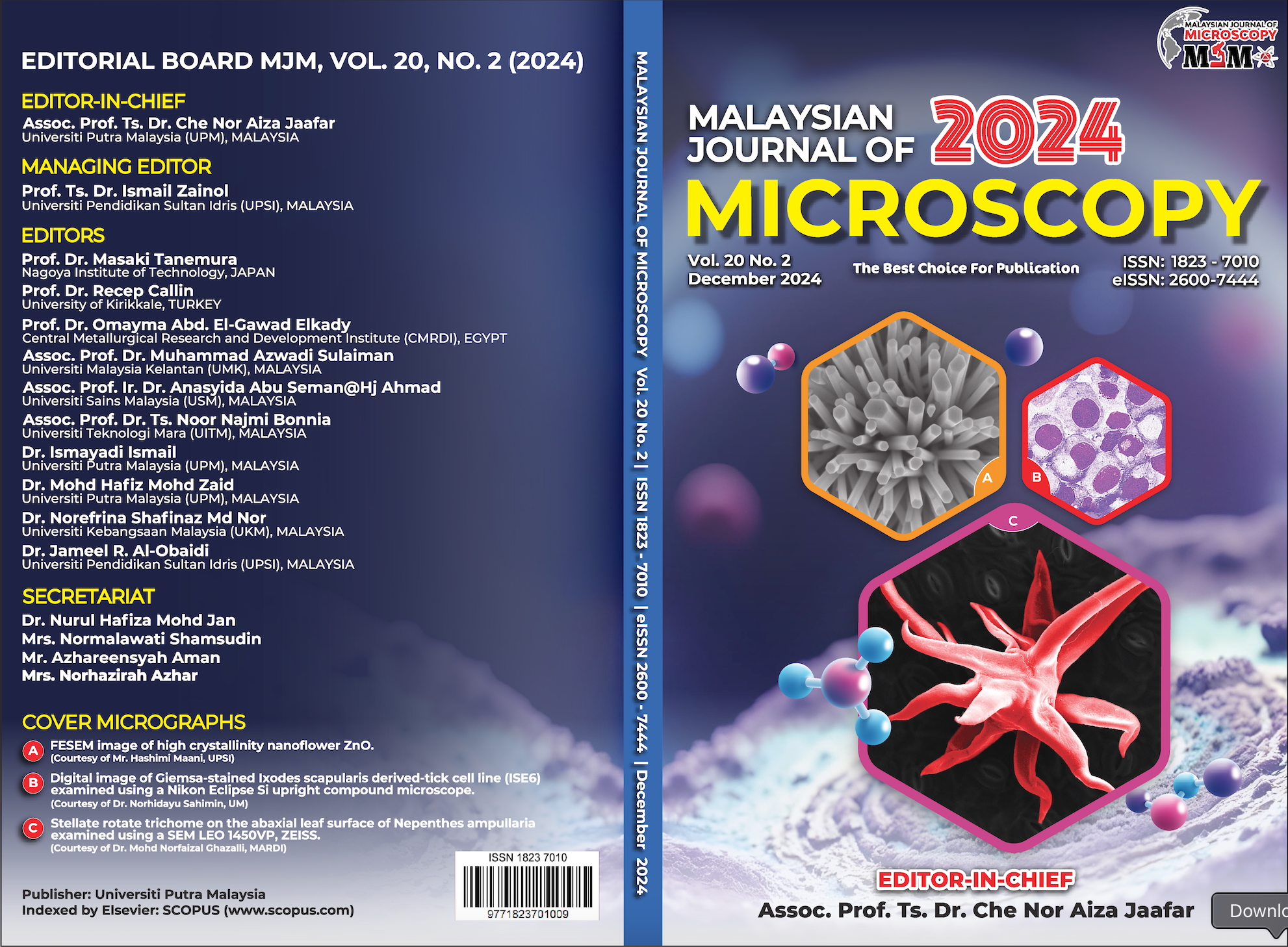OPTIMIZING WATER FILTRATION PERFORMANCE: COLD ISOSTATIC PRESSING (CIP) UTILIZATION OF RICE HUSK WASTE WITH SINTERING AT 1100°C
Abstract
Numerous researchers have shown a keen interest in developing practical methods to maximize the utilization of rice husk (RH) waste. The main objective of this research was to fabricate a water filter using silica derived from RH waste to effectively remove contaminants from well water sources. The amorphous silica-rich black rice husk ash, derived through a fabrication process at 550 °C, serves as an efficient water filtration medium, effectively adsorbing impurities and contaminants to enhance water quality. Furthermore, it is an affordable and sustainable solution for water purification applications since the fabrication process at 550 °C uses less energy and lowers production costs. The silica water filter was manufactured by varying the silica rice husk compositions, which included 78 wt.%, 84 wt.%, and 88 wt.%. The combination of amorphous silica and binders was employed to produce the silica water filter, utilizing the cold isostatic pressing (CIP) method. Subsequently, the compacted samples were sintered at a temperature of 1100 °C. The results obtained from the analysis conducted using Scanning electron microscopy (SEM) provided valuable visual insights into the pore structure of the examined samples and energy dispersive x-ray (EDX) analysis that reveals the presence of silicon (Si) and oxygen (O). Furthermore, measurements for apparent porosity and bulk density were recorded for each sample. For the three different compositions of 78 wt.%, 84 wt.%, and 88 wt.%, the bulk density values were found to be 0.34 g/cm³, 0.27 g/cm³, and 0.25 g/cm³, respectively. Regarding apparent porosity, the results for the respective compositions of 78 wt.%, 84 wt.%, and 88 wt.% were 51%, 55%, and 58%, illustrating that the 78 wt.% silica composition yielded the most effective silica water filter. In conclusion, the outcomes of this research present a promising approach for repurposing rice husk waste, offering a sustainable and efficient solution for water filtration.


